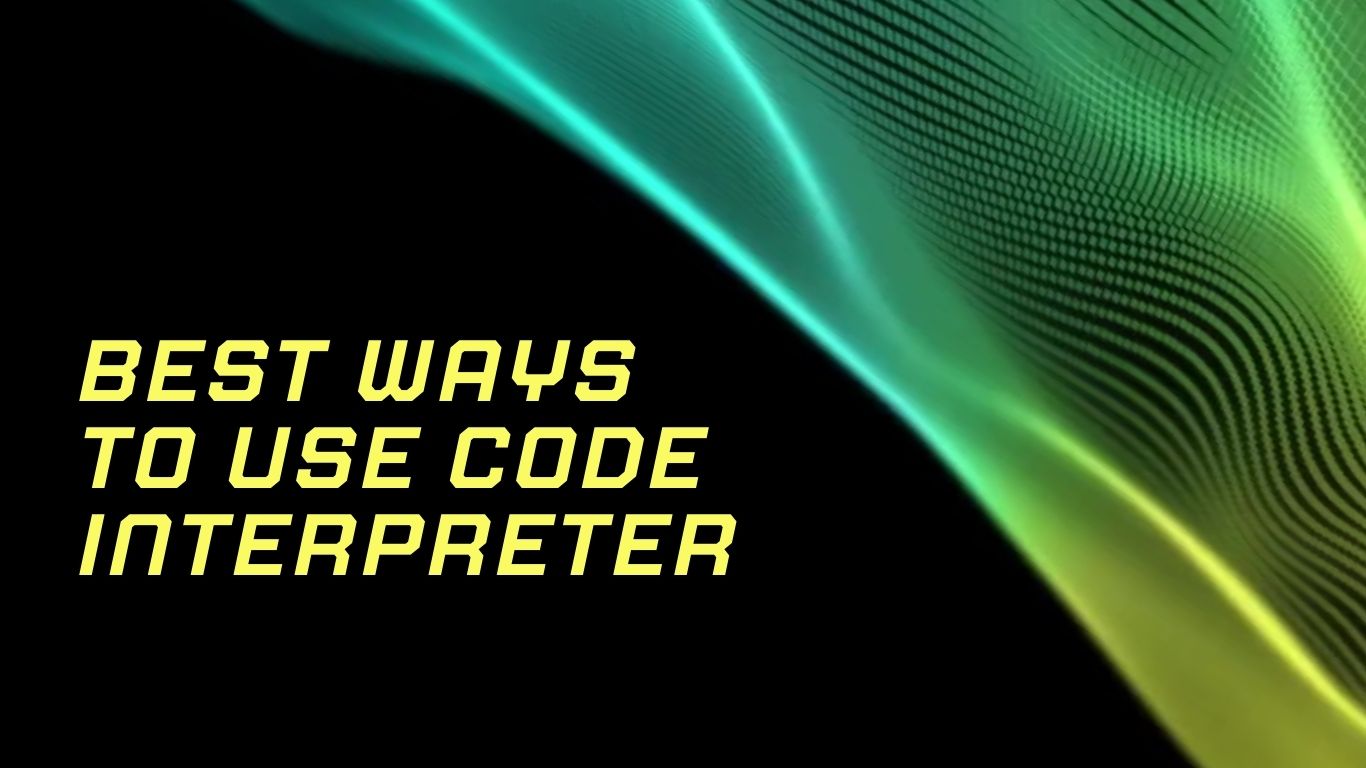Discover the Top 30 Best Ways to Utilize a Code Interpreters: From Image Recognition to Game Development
Introduction
Welcome to our comprehensive guide on the top 30 best ways to use a code interpreter, brought to you by Smart AI. Code interpreters are powerful tools that enable developers, from beginners to seasoned professionals, to execute code in real-time. This functionality allows them to test and experiment with various programming languages and functionalities, making it a valuable asset in the world of software development and beyond.
In this article, we will explore the diverse applications of code interpreters, covering areas such as image processing, data analysis, game development, and more. Whether you are a programmer, data scientist, or hobbyist, our guide will inspire you to harness the full potential of code interpreters to enhance your projects and streamline your workflows.
Image Related Code Interpreter
- Image Recognition: Code interpreters equipped with image recognition capabilities empower developers to build applications that can identify and classify objects within images. Leveraging pre-trained models and machine learning algorithms, code interpreters enable the development of robust image recognition systems.
- Image Scrolling: By using a code interpreter, you can create interactive applications that allow users to seamlessly scroll through large image collections or implement image galleries with ease.
- Enlarge Image: With a code interpreter, implement a feature that allows users to zoom in and enlarge images, beneficial for e-commerce websites and other platforms where detailed views are essential.
- Generate Color Palette: Code interpreters provide the necessary tools to extract color information from images and generate color palettes. Designers and artists can use this functionality for inspiration and creating harmonious color schemes.
- Image Conversion: A code interpreter allows you to convert images from one format to another, enabling you to handle different image file types and optimize them for specific purposes or platforms.
- Flip Image Horizontally: Easily flip images horizontally using a code interpreter, which is useful for creating mirrored versions of images or implementing a horizontal flip feature in an application.
- Generating Animated GIFs: Through code interpretation, create animated GIFs by combining a series of images or frames. This feature opens up possibilities for captivating visual content, such as animated banners or interactive elements.
- Convert GIF to Video: Code interpreters can also convert GIFs into video files, seamlessly integrating GIFs into video projects or platforms that don’t support the GIF format.
- Image Cropping: Utilize a code interpreter to programmatically crop images, enabling you to focus on specific regions or adjust dimensions to fit particular layouts.
- GIF from Location Information: Code interpreters allow you to generate GIFs based on location information, particularly useful for geospatial data visualization or interactive maps.
Create a Graph
- Output to PowerPoint: Code interpreters provide the capability to generate PowerPoint presentations programmatically. This feature automates the creation of slideshows or integrates data-driven graphs and charts into presentations.
- Creating Dynamic Graphs: With a code interpreter, create dynamic graphs that update in real-time based on changing data. This interactive capability is especially useful for visualizing live data feeds or displaying dynamic trends.
- Create a Radar Chart: A code interpreter allows you to create radar charts, effective for visualizing multivariate data and comparing multiple variables across different categories.
- Create a Pie Chart: Pie charts are powerful visualizations for representing proportions and percentages. With a code interpreter, generate pie charts to convey data distribution intuitively and visually.
- Create Graphs from Sentences: Code interpreters with natural language processing capabilities can analyze sentences and generate corresponding graphs. This functionality enables automatic visualization of textual data, aiding in identifying patterns and trends.
- Bitcoin Data Analysis: Leveraging code interpreters, analyze Bitcoin data, such as historical prices and trading volumes. This analysis can provide insights into market trends and aid in making informed decisions.
- Data Analysis from CSV File (EDA): Using a code interpreter, perform exploratory data analysis (EDA) on CSV files to understand dataset structure and patterns, extract valuable insights, and make data-driven decisions.
- Create a Graph Based on Learning Data: Code interpreters are excellent tools for creating graphs and visualizations based on machine learning data. Visualizing model performance, feature importance, or decision boundaries aids in a deeper understanding of learning algorithms.
- Create Visual Data: Code interpreters facilitate the creation of visual data representations, such as heatmaps, scatter plots, and bar charts, which aid in understanding complex information and communicating insights effectively.
- SEO Analysis: Code interpreters equipped with SEO analysis capabilities help website owners optimize content for search engines. Analyzing factors like keyword density, meta tags, and link structures, these interpreters provide valuable insights to improve website visibility and rankings.
Others
- Making a Shooting Game: Develop shooting games using code interpreters, creating immersive and interactive gaming experiences with features like enemy AI, weapon mechanics, and level progression.
- Extracting Data from CSV Files: Use a code interpreter to extract data from CSV files and process it programmatically, a valuable capability for dealing with large datasets and automating data manipulation tasks.
- Create QR Code: Code interpreters provide the necessary tools to generate QR codes, widely used for sharing contact information, directing users to websites, or facilitating mobile payments.
- Company Analysis: Perform company analysis by analyzing financial data, market trends, and other relevant factors using a code interpreter. This analysis helps businesses make informed decisions and gain insights into their competitive landscape.
- Extract Text from PDF: Code interpreters enable the extraction of text from PDF files, making it easier to analyze and process textual information, particularly when dealing with large volumes of text or conducting research on PDF documents.
- Zip File Contents Extraction: Using a code interpreter, extract the contents of zip files programmatically. This feature streamlines the process of accessing and manipulating files within compressed archives.
- Extract Text in Image: Code interpreters with optical character recognition (OCR) capabilities can extract text from images. This functionality is useful for tasks such as digitizing printed documents, extracting text from screenshots, or automating data entry from images.
- Organize ChatGPT Conversations into .txt: Code interpreters enable the organization of ChatGPT conversations into text files for easier management and analysis, especially when dealing with large volumes of conversational data.
- Generate HTML File: With a code interpreter, generate HTML files programmatically, useful for automating web page creation, dynamically generating content, or exporting data in a web-friendly format.
- Create a Function: Code interpreters allow you to define and implement custom functions, enhancing code reusability, modularity, and abstraction for more maintainable and efficient code.
Conclusion
In conclusion, code interpreters offer a vast array of functionalities and applications across various domains. From image recognition and data analysis to game development and file manipulation, code interpreters empower developers and enthusiasts to unleash their creativity and achieve remarkable results.
By exploring the 30 best ways to use a code interpreter outlined in this article, you can harness the power of code interpretation and elevate your projects to new heights. Embrace the endless possibilities and embark on a coding journey filled with innovation, problem-solving, and discovery.
Smart AI is excited to see the incredible projects you create with the help of code interpreters. Happy coding!

